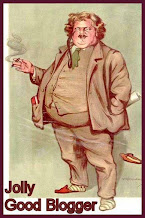I spalten "Spør historikerne" stilles spørsmålet om folk var redde for verdens undergang da år 1000 nærmet seg. Svaret er ikke til å misforstå.
Ja. Allerede på midten av 900-tallet forutså mange prester at verden ville gå under nyttårsaften år 999. En stor komet viste seg på himmelen i 989, og ble sett som en bekreftelse på den dystre spådommen. I desember 999 var det en utbredt tro på at det gikk mot slutten. Mange prøvde i siste liten å skaffe seg en plass i himmelen. Flere solgte sitt jordiske godt og ga formuen til de fattige.Nå er det ikke enkelt å gå hardt ut mot utsagn av typen "mange", "utbredt" og "flere". Men det er liten tvil om det etterlatte inntrykk av artikkelen. Man ser for seg at store skarer over hele Europa samler seg i panikk og forventning.
Mens dette i realiteten er en moderne myte. Sporene burde være lett å følge, selv for "historikere" som skal svare i Historie.
For det første er fortellingene om dette hentet fra over 500 år etter.
The earliest mention of the panic was in a passage on the year 1000 in the Annales Hirsaugiensis written by the German abbot Joannes Tritemius about 1500:For det andre er det ingen samtidige kilder som forteller om dette.
“In this year a terrible comet appeared, which by its look terrified many, who feared that the last day was at hand; inasmuch as several years before it had been predicted by some, deluded by a false calculation, that the visible world would end in the year of Christ 1000.” (Quoted in Burr 1901)
This passage was not printed until 1690 and the first actual publication to mention the millennial end of the world was that of Cardinal Baronius in his Annales Ecclesiastici of 1605.
In 1873 the Benedictine Francois Plaine thoroughly demolished the basis of the legend: no eleventh century Italian, German, French or English annalist mentioned such a panic; such statements of the imminence of the end of the world as those from the Councils and preambles have been heard constantly since the beginning of Christianity; it could not have been later than 960 when Abbo heard that preacher, who was refuted on the spot and rated no further mention; the chronicles added by Robertson refer in two cases to the First Crusade a century later and in the other to 1010 when the cause for alarm was not the magical year 1000 but the taking of Jerusalem by the Turks; and though Glaber mentions prodigies and marvels for the year 1000, as he does for other years, there is no hint of a panic in his text.For det tredje fulgte de færreste vår tidsregning på den tiden.
In an apparently independent study published in 1878, the anti-clerical Paul RosiŠres came to the same conclusions, as did the German historian Heinrich von Eicken, working from German sources, in 1883.
Og for det fjerde (hvis jeg har telt rett), brukte man fortsatt romertall, som ikke hadde helt samme grafiske effekt som noe år "1000".
Burr also points out that the Christian era, which had been introduced by the Roman abbot Dionysius Exiguus in his Easter table of 525 A.D. (Ginzel 1914), was not generally used by 1000. Indeed, Dionysius himself had not dated his letters by this era (Pedersen 1983) and the first papal documents to do so were of the papacy of John XIII (965-972). (Ginzel 1914)Dermed har middelalderhistorikerne for lengst lagt denne ballen død.
Further even Christian dates were usually expressed in Roman numerals and M does not have the cachet of the “round number” 1000. In short even if the great masses who supposedly panicked had been aware of the year of the Christian era they would probably not have thought it significant.
“None of this is true. Not the suicides, not the flaming swords, not the whips. Not the absolution, nor the parole, nor the forgiveness of debts. Not the mass hysteria, the fatalism, the nightmare, the terror of the number itself. Not the families abandoned (or swept up) by an army of pilgrims, nor the wealth divested (or spent on saddlebag supplies) by pilgrim knights, pilgrim serfs. No, not the buildings left to decay, not the churches in ruins. Not even the panic itself, unless all accounts of general consternation have been suppressed. And no mechanical clocks to strike the midnight hour at millennium’s end, no hallelujah choruses at a minute past twelve. None of it – at least according to the last hundred years of scholarship. A score of medievalists have published books and articles in Italian, French, English and German demolishing evidence for a ‘panic terror’ at the approach of the year 1000.”Kort sagt litt uklart hvor Historie har hentet dette fra. Samme solide kilde som sier at paven stadig er uenig med Galilei?





















Ingen kommentarer :
Legg inn en kommentar